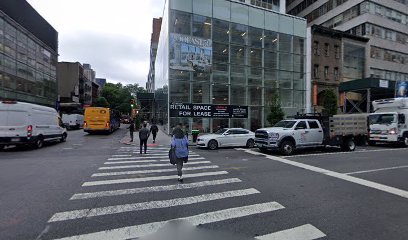City support provides crucial funding for our “culturals,” the short-cut government catch-all term used for large…
By Corey Bearak
With the new city budget adopted, some groups can breathe a bit easier, including many Queens cultural institutions and programs.
City support provides crucial funding for our “culturals,” the short-cut government catch-all term used for large institutions such as the Museum of Natural History, relatively new ones like the New York Hall of Science or programs like the Queens County Farm Museum in Bellerose or the Queens County Historical Society. Despite clear economic and fiscal benefits of public investment in culturals, their dollars remain among the first government cuts, and restorations in better fiscal times never restore all the funding our culturals lost
Every $1 investment in culturals returns the city $2 in taxes. Supporters note how neighborhood-based culturals drive economic activity, attracting visitors who also shop and eat out locally. The many and diverse attractions beyond the 34 cultural institutions noted on the Department of Cultural Affairs Web site (www.nyc.gov/html/dcla/html/funding/cultural_inst_links.shtml), support tourism.
The variety of employment opportunities the culturals offer run the gamut from professional to low-skilled. This remains important as manufacturing declines and opportunities for stable employment for the lesser educated often means lower-paid service-related jobs.
When some civic colleagues were considering a cultural platform for the next Queens Civic Congress platform expected this summer, much discussion centered on the funding formulas used by the city's Department of Cultural Affairs. Funding gets allocated along two basic categories: cultural organizations (group), or COG, and the cultural institutions group, or CIG.
For the cultural organizations group, the Department of Cultural Affairs allocates money to fund specific programs that it thinks worthy of support, usually educational programs, or special events. The Queens County Farm Museum, the Queens Historical Society and Poppenhusen Institute are in this category, among several hundred others citywide. Capital funds, when granted, come out of a general cultural line.
For the cultural institutions group, the Department of Cultural Affairs supports payroll, utilities, general maintenance and the like, and even places the culturals’ employees in the Cultural Institutions Pension Plan. The New York Hall of Science, the Queens Botanical Garden, and the Queens Museum of Art and Flushing Town Hall benefit through cultural institutions group status. Some like museums in Manhattan have enjoyed this kind of massive support since the late 19th century. Each of these 34 institutions has its very own line in the capital budget.
The funding formula poses some serious issues. The impact often lacks a rational basis. Smaller cultural institutions groups often function more like cultural organizations groups. And some cultural organizations groups, such as the farm museum, ought to be cultural institutions groups. As a result, some observers find funding levels a general accident of history based on which institutions found favor, particularly with the various borough presidents at the Board of Estimate over the last century.
The Board of Estimate no longer exists, its budget powers now divided primarily among the City Council and the mayor. The former entity, which included the five borough presidents, the city comptroller, the City Council president (now the public advocate) and the mayor, exercised primary power over the capital and expense budget before the 1989 charter revision took hold.
The Civic Congress proposal involves the city adopting a formula based on attendance, amount of attendance from outside the city (to factor in the difference between recycling our residents’ own money and an institution’s ability to attract money from outside the city), the size of the physical plant to maintain, size of payroll, and quality of programs.
The risk with this proposal is overall city funding remaining constant. Without added funding, this kind of rational formula could mean some institutions would have their funding levels cut while other would enjoy increases, perhaps substantial increases.
Cultural amenities offered in the city often outweigh the negatives residents face in their daily living. This includes crime (even though major crime continues a decade-long decline), longer job commutes, crowded conditions, lousy schools or longer commutes to better ones or paying for non-public alternatives.
Cultural opportunities can balance any decision to leave the city. The city needs to support those amenities that the suburbs and other states just cannot duplicate. Chiefly that comes down to the arts and culture, such as theaters, museums and parks. The city maintains less control over the job market and high salary factors, which can also help attract residents.
Studies have shown that a small investment by the city in culturals leads to higher income to restaurants, hotels, etc. from tourists who visit the museums and theaters; the city largely recoups the investment through higher sales and income taxes. Retaining those of our residents who patronize the arts remains important because these New Yorkers tend to be the better educated, higher income people who support our tax base.
Corey Bearak is an attorney and adviser on government, community and public affairs. He is also active in Queens civic and political circles. He can be contacted via e-mail at Bearak@aol.com.






























